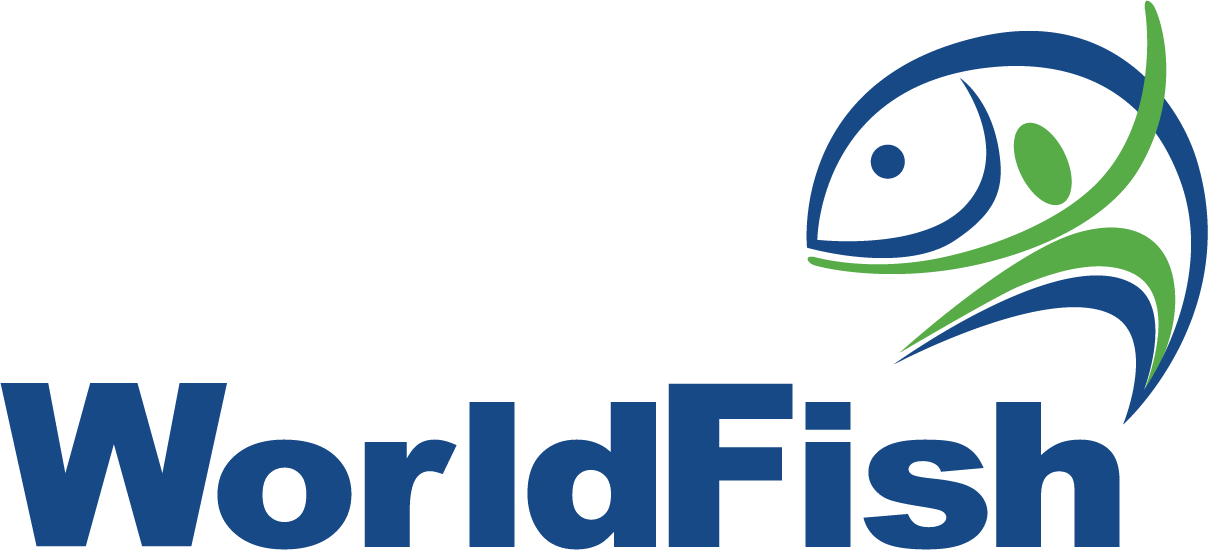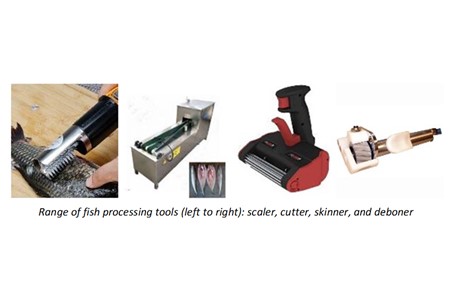Mechanized Processing and Value Addition for Fish Products
Summary
Fish processing refers to the processes associated with fish and their products from the times they are harvested to when they are offered to consumers. Fish is a highly perishable food that requires proper handling and preservation to extend its shelf-life and retain its desirable taste and nutritional value. Processing technologies also add value to fish products by improving their palatability and market acceptance. The key to delivering quality fish-based foods requires close attention to harvesting, handling and storage. Solar tent dryers and smoking kilns are among the most popular, low-cost, and widely used fish preservation technologies. By reducing the moisture present in fish these two methods avoid the need for refrigerated transport and storage. A wide range of value-added products that can be manufactured include fish powder, fillets, brochette, sausages, fingers, crackers, samosas, and cakes.
About the Solution
Fresh fish spoils easily after harvesting due to high temperature which accelerates activities of bacteria and chemical oxidation. Post-harvest losses are minimized by processing and preservation. Removing the scales and gut, washing, and filleting of fish are the first steps to achieve short-term storage, and to manufacture value-added products. Various food preparation methods like drying, smoking, frying, grilling, and baking can be used to improve appeal, taste, and finishing. Equipment used for scaling, filleting, skinning, and deboning allow for quick, and safe processing of fresh compared to manual operations. Solar dryers provide a low-cost alternative and are constructed with readily available materials. Smoke contains antibiotic substances that kills microorganisms, and the heat dries the fish.
An improved design with a motorized fan system has been introduced to fish production regions that drastically reduces energy consumption and processing time and improves smoke control and hygiene. At the same time, options exist to reduce the dependency on complex equipment and create job opportunities in processing while meeting sanitation requirements. Different sizes of solar dryers can be built, with the smaller units measuring two meters in height and 1.7 meter in length and width. All types of fish may be processed using electric scaling, cutting, skinning and de-boning machines, and preserved with solar dryers and improved smoking kilns. The equipment is suitable for different sized fish, but the processing time varies accordingly.
Electric scalers have a rotating spindle head with serrated teeth that lifts the scales and pulls them as they are moved across the skin, and a splash cover that avoids the spraying of fish scales. A cutter has a small double conveyor belt which takes the fish through a vertical blade and produces equal-sized fillets. The key part of deboning and skinning machines is a ribbed or tooth roller head that is horizontally moved over the inside and outside of fillets, removing small bones. A solar dryer is made of a wood or metal frame structure that is covered with polythene sheets, trapping the sun's heat inside. Fish are spread out on wire mesh shelves so excess water can drip through and desiccate the product evenly. An improved smoking kiln consists of four main components: an air-tight chamber with stacked trays to hold fish and an oil collection pan at the bottom, a fan for even flow of heat and smoke, a thermometer for monitoring chamber temperatures, a chimney with a damper to filter soot and diffuse smoke. Charcoal is used in the kiln for generating heat and smoke, although soaked woodchips may be added to add a distinctive taste.
Processing starts with the removal of scales and gut contents from whole fresh fish after which they can be cut into fillets, skinned, and deboned. Pliers may be used to pull skin away from flesh and bones, particularly for catfish that lack scales. Tools and surfaces used for processing need to be regularly sanitized with clean water and disinfectant. Staff hygiene is critical to ensure food safety and requires the use of gloves, hairnets, and overalls. After cleaning, the fish is ready for drying and other forms of value-addition processing. In solar tent dryers, sunlight falls onto the transparent polythene surface to heat up the air inside which gently desiccates the fish, and a motorized fan accelerates convection and air circulation. Well-constructed units are rainproof and may even be operated in bad weather. Tents must be fully exposed to sunlight and should be positioned facing the prevailing wind to improve air movement. The optimal temperature for smoking ranges from 45° C to 70° C. Smoking fish for one or two hours provides an appetizing taste and short-term preservation but must be extended for four to six hours for complete drying.
Commercialization
Commercially available
Solution Images
Institutions




